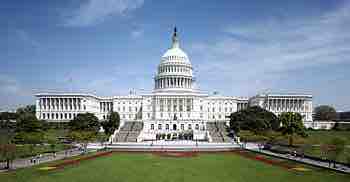Direct lobbying refers to methods used by lobbyists to influence legislative bodies through direct communication with members of the legislative body, or with a government official who participates in formulating legislation .

Direct Lobbying
Both the U.S. Senate and House of Representatives are subject to direct lobbying tactics by lobbyists.
During the direct lobbying process, the lobbyist introduces to the legislator information that may supply favors, may otherwise be missed or makes political threats. A common use of direct lobbying is to persuade the general public about a ballot proposal. In this case, the public is considered to be the legislator. This aspect of direct lobbying attempts to alter the legislature before it is placed on the ballot. Communications regarding a ballot measure are also considered direct lobbying. Direct lobbying is different from grassroots lobbying, a process that uses direct communication with the general public, which, in turn, contacts and influences the government.
Washington, D.C. is the home to many firms that employ these strategies. Lobbyists often attempt to facilitate market entry through the adoption of new rules, or the revision of old ones. They also remove regulatory obstacles for a company looking to grow, while also stopping others from attaining regulatory changes that would harm a company's cause.
Meta-analysis reveals that direct lobbying is often used alongside grassroots lobbying. There is evidence that groups are much more likely to directly lobby previous allies rather than opponents. Allies are also directly lobbied if a counter lobby is brought to light. When groups have strong ties to a legislator's district, they will use a combination of grassroots and direct lobbying, even if the legislator's original position does not support theirs. When strong district ties are not present, groups will rely on direct lobbying with committee allies.